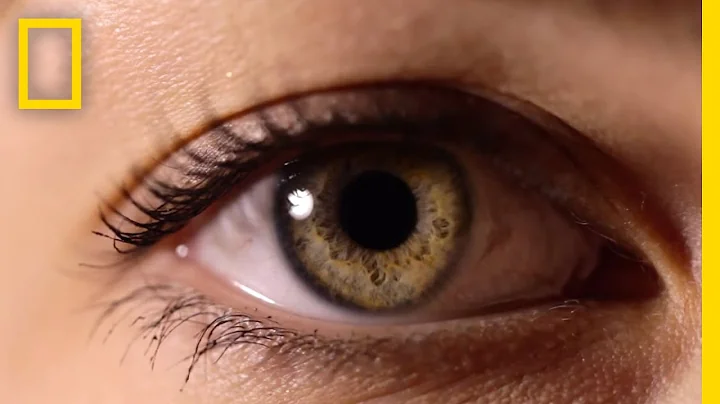

If amblyopia is an iceberg in the growth and development stage, then low vision is just the tip of the iceberg, and other potential visual dysfunction problems underneath will be the reef that endangers learning and life.
htmlThe 06-year-old Yiyi has amblyopia due to high astigmatism . She is quiet and introverted and has had poor eyesight since she was a child (binary vision 0.3). Her eyeball movement is not sensitive, and her reaction and adaptability are worse than other children. The examination found I have a high astigmatism problem. The doctor recommends wearing glasses and wearing them all day.However, Yiyi is prone to falling after wearing glasses, and is accompanied by obvious dizziness, visual distortion, and other discomforts. In addition, when writing , letters and numbers often appear to be reversed from left to right, with different sizes..
The reason is that astigmatism brings not only blur to the amblyopic eye, but also visual distortion. When the brain receives and integrates visual signals from both eyes, it needs to overcome the problem of uneven object images, which will subsequently cause symptoms such as dizziness and nausea.
Yiyi is like this, but at the age of 6, she is very strong, insists on wearing glasses, works hard to adapt, and comes to the hospital on time for amblyopia training , even though she often falls and gets dizzy.
One month after the training, the child's discomfort with wearing glasses has been alleviated. Changsha Aier Eye Hospital Vision trainer Zhang Huina found during the examination and communication with Yiyi that in addition to the discomfort, the blurred vision has also This little girl with strong self-esteem developed a mentality of inferiority and avoidance.
's trainer encouraged her to do her best to identify the visual targets every time. Within a month, although Yiyi's vision did not improve much (binary vision 0.3+), the clarity improved significantly. In the follow-up training of
, the trainer communicated with parents to encourage Yiyi and continue to wear glasses and train.

In the second month after visual training, the child's dizziness and other discomforts have disappeared, but he still occasionally falls. The vision and function were reviewed and the vision was significantly improved (binocular vision 0.6), and the binocular vision function was initially established. The most important thing is that he is introverted. Yiyi gradually became lively, and a confident smile filled her little face for the first time.
Subsequently, due to the epidemic, parents chose to combine in-school training with remote training. In the third month of , the visual acuity of both eyes improved to 1.0.
At this stage, the child's vision has reached normal and stable levels. The personalized plan formulated by the vision trainer for Yiyi includes consolidating vision, establishing binocular vision function and visual cognitive training. Let us look forward to the progress of Yiyi's children!
Learn more: In addition to what we often call eyesight, poor visual cognitive function also affects learning, resulting in poor eye movement ability, easy inversion and wrestling of alphanumeric writing, slow reading speed and slow adaptability , etc.
Behavioral actions promote the development of early vision, and vision also drives the further development of the hands and brain.
During the period of visual development, the stimulation of abnormal visual signals activates the compensatory mechanism of the hand, eye and brain. Invisibly, some unquantified problems often manifest themselves through behavior. Children appear to be restless, inattentive, have difficulty reading, and have poor academic performance , etc. , but it is also easy to be ignored or considered naughty and clumsy.

Children, are they really stupid children?
No, that is a signal to ask for help when there is a problem in the development of the hand, eye and brain, an alarm for visual cognitive impairment. The performance of
is as follows:
1, restless, inattentive or short of time.
2. Delayed development of motor skills, poor hand-eye-brain balance and coordination (easy to fall).
3. Confusion of left and right, difficulty distinguishing letters and numbers, easy to reverse.
4. Reading is prone to fatigue (rejecting close reading). Frequent eye rubbing may cause double images and headaches.
5. Difficulty in copying and poor writing and reading posture.
6. Poor understanding ability and slow reading speed: serialization, missing words, changing words, and repeated bounces.
7. The writing is confusing: the word spacing is uneven and uneven.
8. Poor monocular movement ability, poor coordination of both eyes convergence (eyes are deviated when writing and reading), and divergence.
Dr. Li Xiaoning, director of the Optometry Department of Changsha Aier Eye Hospital , reminded that amblyopia should be detected and treated early without delay.One of the symptoms of
is the crowding effect, which affects the child's vision development by affecting the resolution ability of the amblyopic eye.
There are other hidden problems that should not be underestimated. For example, low vision can easily breed children's inferiority complex. At the same time, some unquantified visual cognitive problems threaten children's learning and life. This requires parents to monitor their children's behavioral habits. Pay further attention.
(Editor Rainbow. Picture source network, infringement and deletion)
Hunan Medical Chat special author: Zhang Huina, Department of Optometry, Changsha Aier Eye Hospital
Follow @Hunan Medical Chat to get more health science information!





















